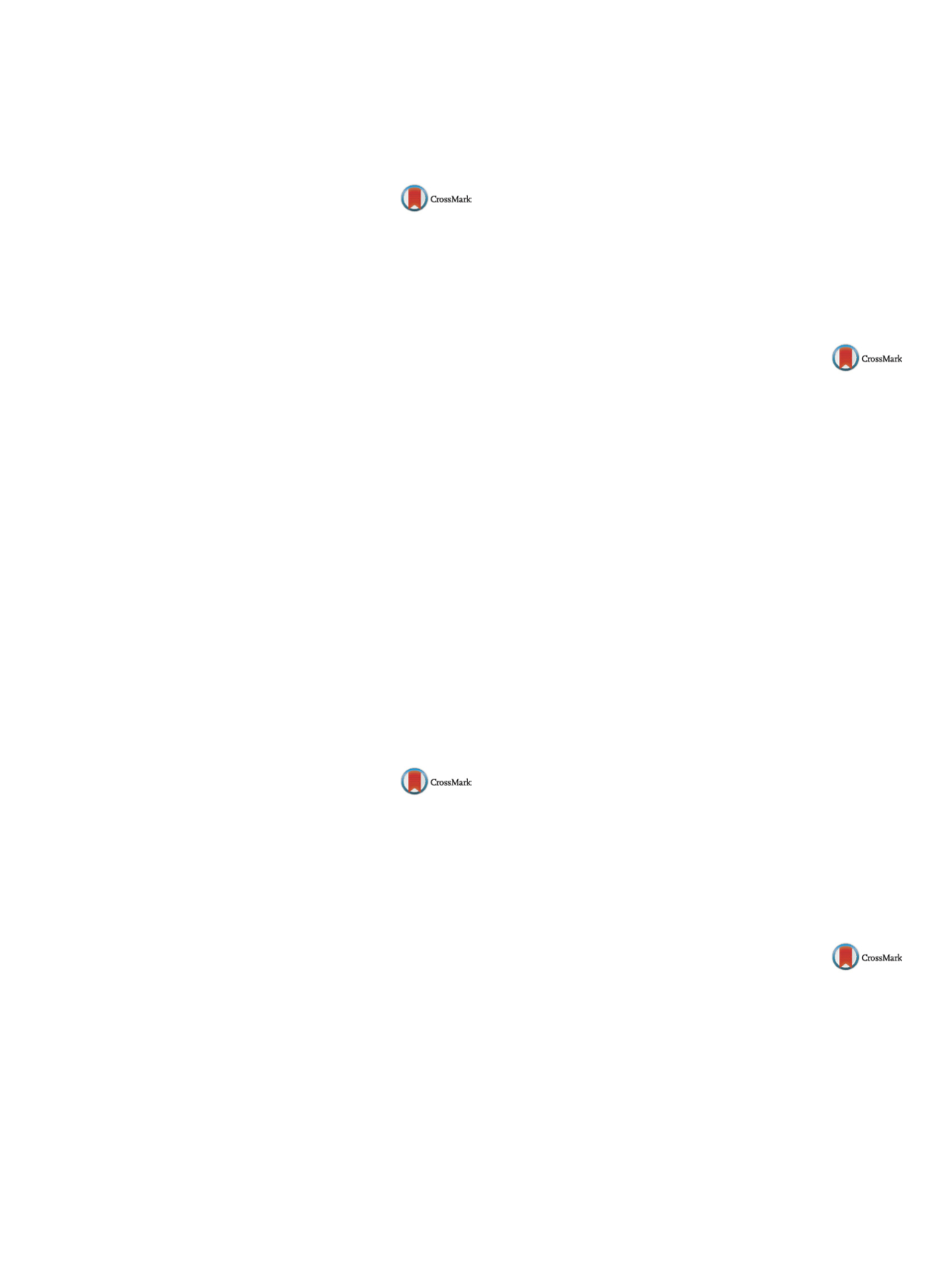

25th European Congress of Psychiatry / European Psychiatry 41S (2017) S645–S709
S701
Disclosure of interest
The authors have not supplied their decla-
ration of competing interest.
http://dx.doi.org/10.1016/j.eurpsy.2017.01.1240EV0911
A Study of empathy in Romanian
general nursing students
F. Romosan
∗
, R.S. Romosan , A.M. Romosan
“Victor Babes” University of Medicine and Pharmacy, Neuroscience,
Timisoara, Romania
∗
Corresponding author.
Introduction
Empathy is of most importance in the medical field.
The ability to comprehend and connect with the emotional state of
another person is essential for establishing a successful interaction
between patients and health care professionals.
Objectives
The aim of this study was to assess empathic response
in general nursing (GN) students.
Methods
The study was conducted between 2015–2016 on 75,
sixth-year Romanian GN undergraduates from the Timisoara “Vic-
tor Babes” university of medicine and pharmacy. To evaluate the
level of empathy, we used the empathy quotient (EQ), a 60-item
self-report inventory with 40 questions empathy-related and 20
filler questions.
Results
We included in this study 12 (16%) males and 63 (84%)
females, with a mean age of 23.48 years (SD = 2.17). Female GN stu-
dents had significantly higher EQ mean scores than the general
female population. Compared to female students, males obtained
significantly lower EQ mean scores. There were no significant
differences between male and female students regarding age dis-
tribution.
Conclusions
Female GN students showed greater empathy than
their male colleagues, as well as than the general female popula-
tion. These results support the theory on women’s understanding
of others mental states, vital to the provision of a worthy nursing
care.
Disclosure of interest
The authors have not supplied their decla-
ration of competing interest.
http://dx.doi.org/10.1016/j.eurpsy.2017.01.1241EV0912
Cognitive emotional regulation in
Romanian general medicine students
R.S. Romosan
∗
, A.M. Romosan , V.R. Enatescu , I. Papava ,
C. Giurgi-Oncu
“Victor Babes” University of Medicine and Pharmacy, Neuroscience,
Timisoara, Romania
∗
Corresponding author.
Introduction
During medical school, students experience signifi-
cant amounts of stress. Since certain emotion regulatory strategies
are known to be maladaptive, the way in which students are capa-
ble to regulate their emotions becomes very important, because it
can affect their physical and mental welfare.
Objectives
The purpose of this study was to assess cognitive
emotion regulation strategies in Romanian general medicine (GM)
students.
Methods
The study was conducted between 2015–2016 on 86
sixth-year Romanian GM undergraduates from the Timisoara “Vic-
tor Babes” university of medicine and pharmacy. In order to identify
the cognitive emotion regulation strategies (or cognitive coping
strategies) that students use after experiencing negative situations
or life events we used the Romanian version of the cognitive emo-
tion regulation questionnaire (CERQ).
Results
The sample consisted of 30 (34.9%) males and 56 (65.1%)
females, with ages ranging between 24 and 31 years (mean
age = 24.97 years, SD = 1.74). Compared to female students, males
obtained significantly lower mean scores in “umination” (t = -2.84,
P
= 0.005, 95% CI = -1.64; -0.29), “positive refocusing” (t = -2.09,
P
= 0.037, 95% CI = -1.42; -0.04) and “catastrophizing” (t = -3.17,
P
= 0.002, 95% CI = -1.31; -0.3). Both male and female GM students
had significantly higher mean scores in “blaming others” than their
respectively gender-related general population.
Conclusions
Results of this study suggest that GM students, when
facing stressful or negative events, are more inclined in using
“blaming others” as a coping strategy. Female students seem to be
more inclined than males to use “rumination”, “catastrophizing”
and “positive refocusing” as cognitive coping mechanisms.
Disclosure of interest
The authors have not supplied their decla-
ration of competing interest.
http://dx.doi.org/10.1016/j.eurpsy.2017.01.1242EV0913
Antipsychotic-induced
hyperprolactinemia
S. Khouadja
∗
, R. Ben Soussia , A. Bouallagui , I. Marrag , S. Younes ,
M. Nasr
University Hospital, Psychiatry, Mahdia, Tunisia
∗
Corresponding author.
Introduction
As antipsychotic agents are increasingly used, many
patients are at risk for antipsychotic-induced hyperprolactinemia.
Aims of the study
Estimate the prevalence of hyperprolactinemia
in patients treated by a single antipsychotic and identify the risk
factors for its occurrence.
Methods
This is a prospective study carried out at the psychiatric
department of psychiatry of university hospital of Mahdia during
24 months. We have included all patients with a follow up and
treated by single antipsychotic for at least 12 weeks. A pituitary
MRI has been requested for patients with a prolactin level higher
than 100 ng/ml.
Results
We have collected 92 patients. Hyperprolactinemia was
found in 34.8% of patients among which 7.6% have had prolactin
level greater than 150 ng/ml. Pituitary MRI have revealed 2 cases of
macro-adenoma. The decrease of the antipsychotic doses has sig-
nificantly improved prolactin levels. The switch of antipsychotic
with another less inducing hyperprolactnimea has significantly
decreased prolactin levels. 7 factors were correlated significantly
to hyperprolactinemia: sex (female), substance use, presence
of side effects, combination of psychotropic drugs, atypical
antipsychotics, type of antipsychotic: Haloperidol and amisul-
pride, antipsychotic dose greater than 1000mg Chlorpromazine
equivalent.
Conclusion
Hyperprolactinemia must be carefully identified,
through a pre-therapeutic assessment and monitoring of patients.
Disclosure of interest
The authors have not supplied their decla-
ration of competing interest.
http://dx.doi.org/10.1016/j.eurpsy.2017.01.1243EV0914
Hyperinsulinism as evidence of
munchausen syndrome by proxy:
A case report
S. Khouadja
∗
, S. Younes , S. Fathallah , R. Ben Soussia , L. Zarrouk ,
M. Nasr
University Hospital, Psychiatry, Mahdia, Tunisia
∗
Corresponding author.
Introduction
Hyperinsulinism is one of the most important
causes of hypoglycemia. Rarely, drug toxicity can be a reason. In
the context of Munchausen syndrome by proxy (MSBP), toxicity
usually occurs in children due to drug administration by a parent
or caregiver.
Methods
we report a case of a 2-year-old girl with hyperinsuli-
naemic hypoglycaemia due to insulin injections by her mother.


















